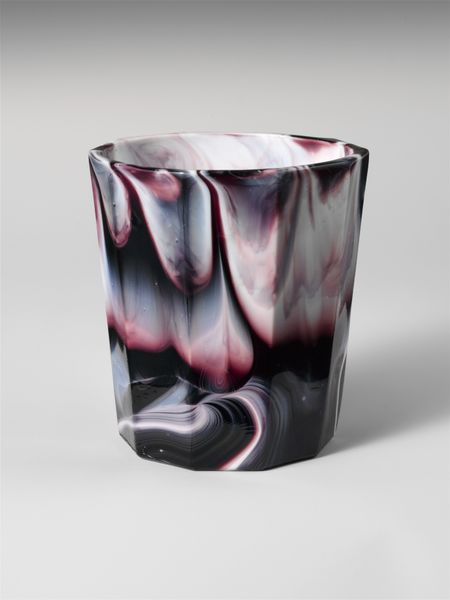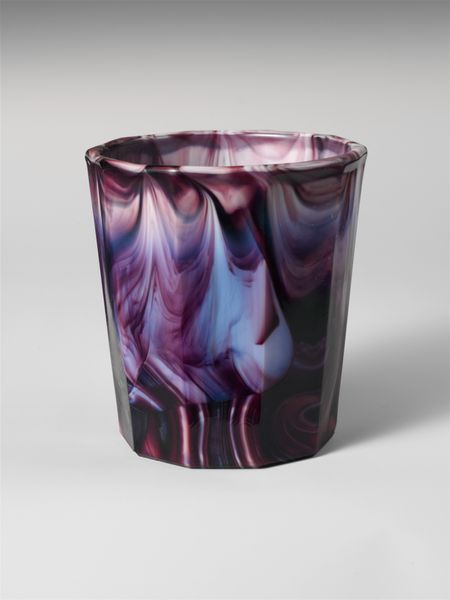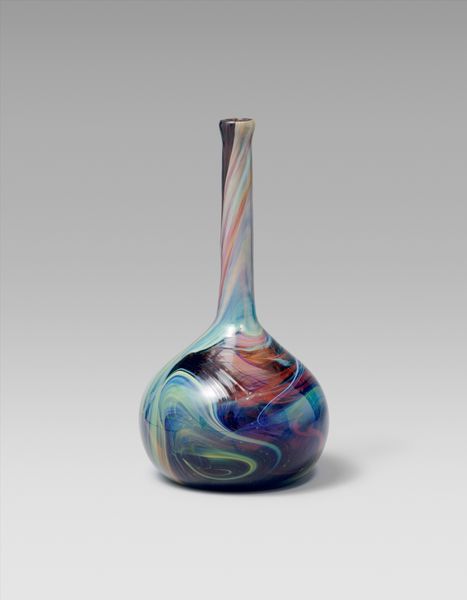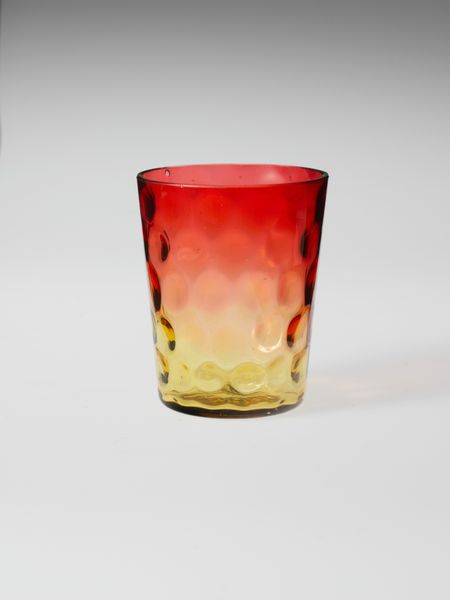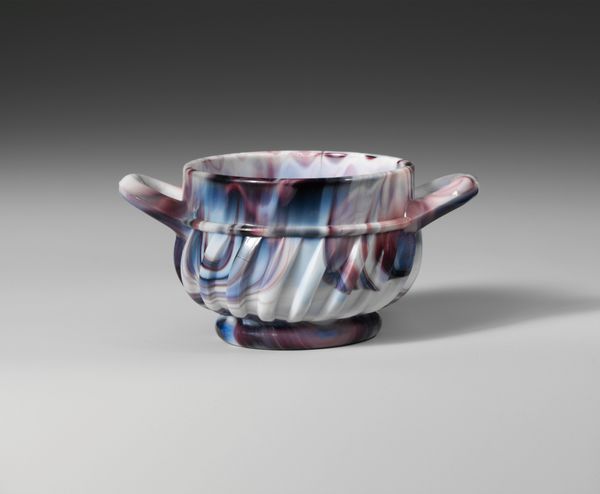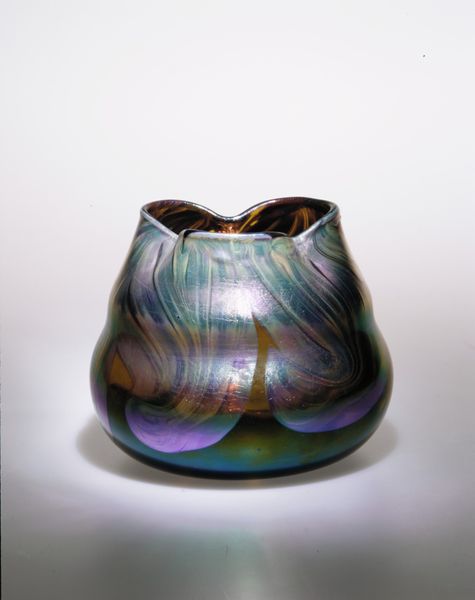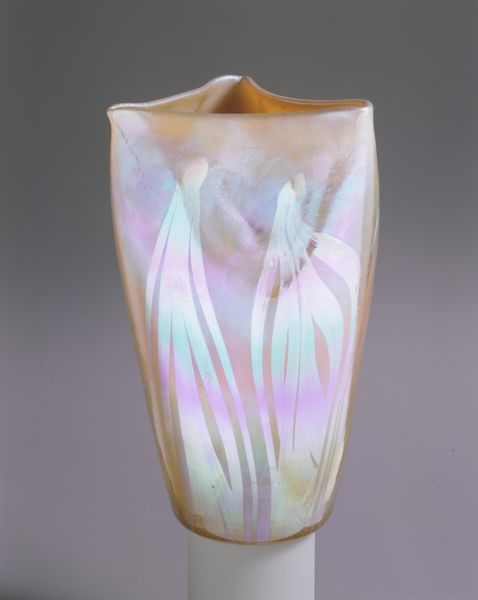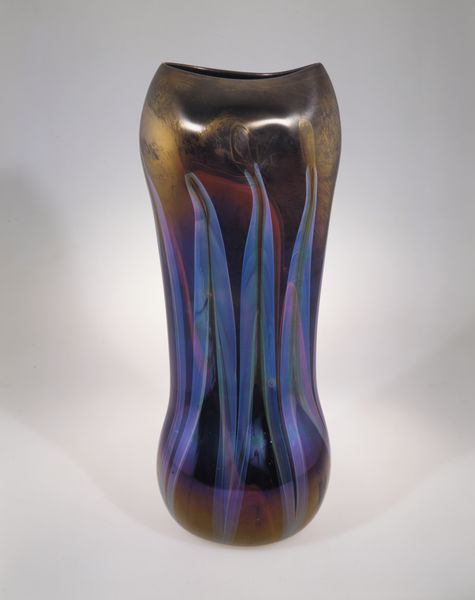
glass
#
glass
Dimensions: H. 3 5/16 in. (8.4 cm)
Copyright: Public Domain
Curator: Well, hello, Editor! Today, we're looking at a glass tumbler produced by Challinor, Taylor and Company sometime between 1870 and 1890. It resides here at the Metropolitan Museum of Art. Editor: It strikes me as surprisingly opulent for everyday use, even with that faceted shape. It reminds me of marble with those purple, blue, and white swirls—but a more dreamlike marble. Curator: I agree. And that swirling effect likely comes from the production process itself, a blend of different glass batches manipulated while still molten. It raises questions about accessibility, doesn't it? Mass-produced glass meant it wasn't exclusively for the wealthy, but how were these elaborate designs received by workers and consumers in that era? Editor: Precisely. Whose labor created this? What was the daily reality for these glassworkers, and how did the burgeoning industrial age shape their existence, especially in relation to aesthetics, class, and aspiration? The visual luxury could highlight disparity, offering escape or rubbing salt in the wound. Curator: Considering this tumbler falls into a period of significant industrial expansion, we should think about the role of these manufactories and their marketing strategies. What did it signify for American industry to produce luxury goods, even seemingly humble items like drinking glasses? Editor: Good point! The production of such visually rich pieces surely affected labor practices, the development of worker identities, and of course, shaped access and consumption patterns around the promise of aesthetic enrichment within an industrialized society. We need to consider who benefits most. Curator: I like the turn this discussion has taken! It allows for understanding production methods and for analyzing a much broader socioeconomic context related to materiality, class, and taste formation during that specific period of rapid transformation in late nineteenth-century America. Editor: Definitely. Looking closely lets us excavate not just its craftsmanship but also the historical narratives embedded within. Who owned this tumbler? What did it represent for them and their aspirations? Every artifact connects us to wider human experiences.
Comments
No comments
Be the first to comment and join the conversation on the ultimate creative platform.
